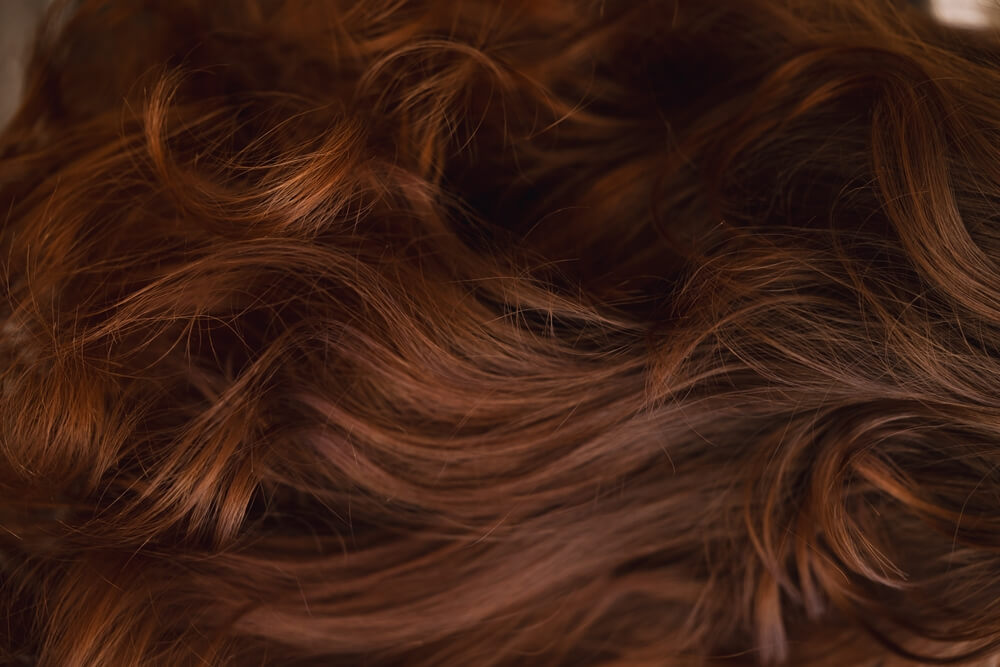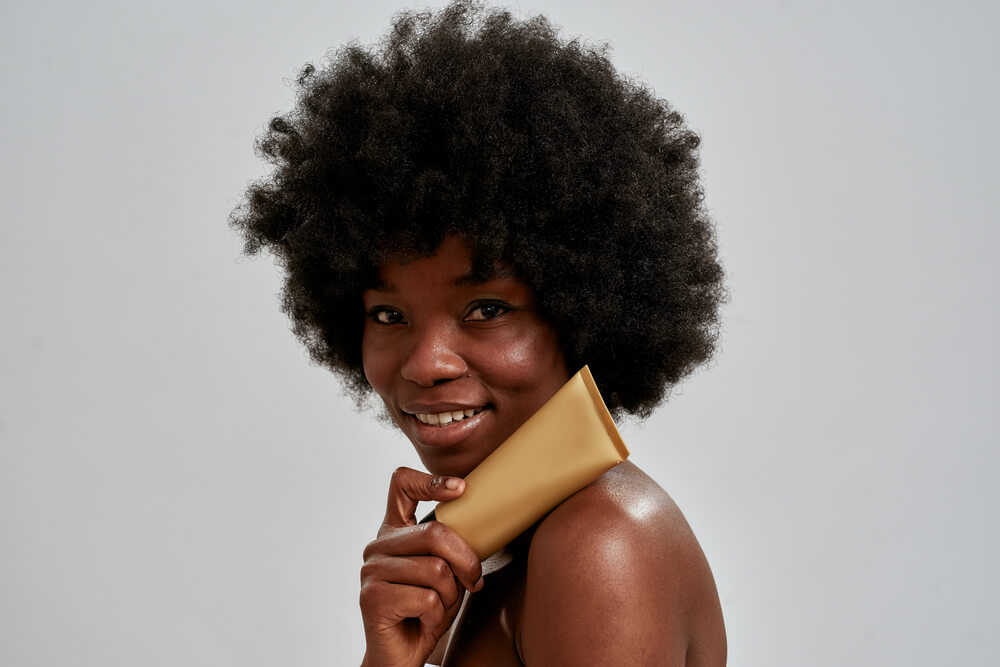Beauty
Auburn Hair Ideas to Transform Your Look

Auburn hair adds warmth and dimension to any style. This guide helps you find the perfect hue, maintain its vibrancy, and showcase it with stunning hairstyles. From rich mahogany to light copper, there’s an auburn shade for every skin tone. Learn to select the ideal hue based on your complexion, keep your color vibrant with essential tips, and explore hairstyles that highlight auburn hair. Achieve stunningly vibrant locks tailored just for you!
The Different Shades of Auburn Hair

Auburn hair comes in a variety of stunning shades, making it a versatile choice for anyone looking to add some warmth and vibrancy to their look. Understanding the different shades of auburn hair can help you find the perfect hue that complements your skin tone and personal style.
Light Auburn: This shade is characterized by its soft, golden undertones that create a sun-kissed effect. Light auburn is ideal for those with fair to medium skin tones, adding a subtle yet radiant glow.
Dark Auburn: For those who prefer a deeper, more intense color, dark auburn offers rich mahogany undertones. This shade works well with medium to dark skin tones and provides a sophisticated and dramatic look.
Copper Auburn: If you’re seeking a fiery and bold option, copper auburn delivers striking orange-red hues. This vibrant shade stands out beautifully against both light and dark complexions, offering an eye-catching appeal.
Red-Tinted Auburn: Blending classic red with earthy brown tones, red-tinted auburn creates a balanced and natural appearance. This versatile hue suits various skin tones and adds an elegant touch of warmth without being overly bold.
By exploring these different shades of auburn hair (light auburn, dark auburn, copper auburn, and red-tinted auburn) you can find the perfect hue that enhances your features and expresses your individuality.
Auburn Hair Ideas for Various Skin Tones
Choosing the right auburn hair shade can beautifully complement your skin tone, enhancing your overall look. Here are some tips to help you find the best auburn shade for various skin tones.
For fair skin, light auburn shades work wonderfully. These shades often have a mix of red and blonde tones that can brighten your complexion without overpowering it. Think strawberry blonde or a soft, coppery hue. These colors add warmth and radiance to fair skin, making it glow.
If you have an olive skin tone, deeper auburn shades are ideal. Rich mahogany or dark reddish-brown hues can bring out the natural golden undertones in olive skin, creating a striking contrast that highlights your features. These darker shades blend seamlessly with olive complexions, giving a sophisticated and vibrant look.
Matching hair color with complexion is key to achieving a harmonious appearance. Whether you’re opting for light or dark auburn hues, understanding how these colors interact with your specific skin tone will ensure you choose the most flattering shade. Experimenting within these guidelines can lead to stunning results that enhance your natural beauty.
Auburn Hair Maintenance Tips to Keep Your Color Vibrant and Healthy
Maintaining the rich and vibrant hue of auburn hair can be a rewarding yet challenging task. To ensure your color stays bright and healthy, it’s essential to follow specific care tips for colored hair. Here are some practical steps you can take to maintain your auburn hair color:
1. Use Color-Safe Shampoos and Conditioners: Choose products specifically designed for colored hair. These formulations help lock in the dye, preventing it from washing out prematurely.
2. Limit Washing Frequency: Over-washing can strip your hair of its natural oils and fade the color faster. Aim to wash your hair no more than two to three times a week.
3. Cold Water Rinse: Hot water opens up the cuticle, allowing color molecules to escape more easily. Rinsing with cold water helps seal the cuticle, keeping your auburn shade intact.
4. Heat Protection: Frequent use of heat styling tools can damage dyed hair and lead to fading. Always apply a heat protectant spray before using blow dryers, curling irons, or straighteners.
5. UV Protection: Just like skin, dyed hair is susceptible to UV damage which can cause fading. Use leave-in conditioners or sprays that offer UV protection whenever you’re exposed to sunlight for extended periods.
6. Regular Deep Conditioning Treatments: Colored hair tends to be drier than natural hair due to chemical processing. Incorporate deep conditioning treatments into your routine at least once a week to keep your strands hydrated and healthy.
7. Avoid Chlorine Exposure: Chlorine from swimming pools can strip away color and moisture from dyed hair. Wear a swim cap or apply a protective conditioner before swimming.
8. Touch-Ups as Needed: To keep your auburn hue looking fresh, schedule regular touch-ups with your stylist every 4-6 weeks depending on how fast your roots grow out.
By following these care tips for colored hair, you can effectively protect your dyed locks from fading while keeping them vibrant and healthy throughout their lifespan.
Auburn Hairstyles to Showcase Your New Color
Choosing an auburn hue for your hair is a bold and beautiful decision that deserves to be highlighted with the right hairstyle. Auburn hair, with its rich blend of red and brown tones, can be incredibly striking when paired with the right aesthetic hairstyles. Here are some of the best hairstyles for redheads that will enhance your new look and keep your colored hair looking fabulous.
One popular option is loose waves, which add dimension and movement to auburn hair. This style works well because it allows the various shades within the auburn color to catch light differently, creating a stunning visual effect. To achieve this look, use a large-barrel curling iron and gently tousle your curls for a more natural finish.
For those who prefer an updo, consider a braided crown or halo braid. These styles not only keep your hair off your face but also showcase the intricate details of your auburn locks. Braids can highlight the depth and richness of your color while giving you an elegant appearance suitable for any occasion.
If you’re looking for something more casual yet chic, try a messy bun or top knot. These styles are perfect for showing off those gorgeous hues without much effort. Simply gather your hair into a high bun and let some strands fall naturally around your face to soften the look.
Styling tips for colored hair are essential to maintain its vibrancy and health. Always use sulfate-free shampoos and conditioners specifically designed for color-treated hair to prevent fading. Additionally, incorporating regular deep-conditioning treatments will help keep your locks hydrated and shiny.
Enhancing your new look with style doesn’t have to be complicated; it’s all about finding what works best with your unique shade of auburn. Whether you opt for loose waves, braids, or buns, these hairstyles will ensure that you turn heads wherever you go while keeping your colored hair in top condition.
Embrace the Change and Flaunt Your Gorgeous Auburn Locks
Embracing the change and flaunting your gorgeous auburn locks can be a transformative experience. Auburn hair, with its rich hues and vibrant undertones, has the power to enhance your natural beauty and boost your confidence. Whether you’re transitioning to this stunning shade or maintaining it, proper care and styling are essential to keep your locks looking their best.
Regular maintenance is key to preserving the vibrancy of auburn hair. Using color-safe shampoos and conditioners will help protect your hair from fading while nourishing treatments can keep it healthy and shiny. Additionally, minimizing heat styling and protecting your hair from sun exposure will prevent damage and maintain its luster.
Styling options for auburn hair are endless. From loose waves that highlight the natural dimension of the color to sleek updos that showcase its brilliance, there’s a look for every occasion. Don’t be afraid to experiment with different styles to find what suits you best.
Embrace this beautiful change with confidence, knowing that your auburn locks are not just a hairstyle but a statement of individuality and boldness. Flaunt them proudly, knowing you’ve chosen a color that reflects both elegance and strength.

Beauty
The Guide to Caring for 4C Hair – Tips, Products, and Techniques

Caring for 4C hair requires a unique approach due to its tight curls and shrinkage. Moisture retention is crucial as natural oils struggle to travel down the coils, leading to dryness and breakage. Invest in quality products, use protective hairstyles, and maintain a consistent care routine. Understanding how diet affects hair health also supports stronger 4C hair. This guide provides essential tips, recommended products, and techniques to help you embrace your natural texture confidently.
Understanding 4C Hair and Its Unique Characteristics
4C hair texture is a unique and beautiful type of natural hair that is often characterized by its tight curl pattern and dense, kinky strands. Unlike other natural hair types, 4C hair has a distinct curl pattern that forms tight coils, which can be prone to shrinkage. This means that the actual length of the hair may appear much shorter than it truly is when fully stretched out.
One of the most notable characteristics of 4C hair is its versatility. Despite its delicate appearance, this hair type can be styled in numerous ways, from twist-outs and braid-outs to protective styles like box braids and bantu knots. However, it’s essential to understand that 4C hair requires specific care routines to maintain its health and vibrancy.
Moisture retention is crucial for 4C hair due to its tightly coiled structure, which makes it more susceptible to dryness. Regular deep conditioning treatments and the use of hydrating products are vital for keeping the curls soft and manageable. Additionally, gentle handling during detangling processes helps prevent breakage.
Understanding your curl pattern can significantly impact how you care for your natural locks. Embracing the unique characteristics of kinky hair allows individuals with 4C textures to celebrate their natural beauty while ensuring their strands remain healthy and strong.
The Importance of Moisture for 4C Hair

Moisture is crucial for maintaining the health and vitality of 4C hair, which is known for its tight curls and coils. Due to its unique structure, 4C hair tends to be more prone to dryness, making it essential to adopt a consistent moisturizing routine. Here are some key hydration tips for natural hair that can help keep your strands hydrated and looking their best.
First and foremost, incorporating a leave-in conditioner into your daily regimen can make a significant difference. Leave-in conditioners provide continuous moisture throughout the day and help in detangling knots without causing breakage. When selecting products, look for those specifically designed as the best moisturizers for 4C hair; these often contain ingredients like shea butter, coconut oil, and glycerin that are highly effective at locking in moisture.
Another important tip is to deep condition regularly. Deep conditioning treatments penetrate deeper into the hair shaft compared to regular conditioners, providing intense hydration that can last for several days. Aim to deep condition at least once a week using products rich in natural oils and butters.
Protective styling is also beneficial when it comes to moisturizing 4C hair. Styles such as braids, twists, or bantu knots not only reduce manipulation but also help retain moisture by minimizing exposure to environmental elements that cause dryness.
Lastly, don’t forget about the importance of water intake. Hydration starts from within; drinking plenty of water daily ensures that your scalp stays hydrated which in turn promotes healthier hair growth.
By following these hydration tips for natural hair and using the best moisturizers tailored for 4C textures, you can keep your strands well-hydrated and resilient against damage.
Essential Products for Maintaining Healthy 4C Hair
Maintaining healthy 4C hair can be a rewarding journey with the right products. Understanding what your hair needs and selecting the best products for 4C hair can make all the difference in achieving and maintaining its natural beauty.
Leave-in Conditioners: Leave-in conditioners are essential for keeping 4C hair moisturized and manageable. These products provide an extra layer of moisture that helps to detangle, soften, and protect your hair throughout the day. Look for leave-in conditioners that contain natural ingredients like shea butter, coconut oil, and aloe vera to nourish your strands without weighing them down.
Deep Conditioners: Deep conditioning treatments are crucial for restoring moisture and repairing damage in 4C hair. These intensive treatments penetrate deeply into the hair shaft to provide lasting hydration and strength. Using a deep conditioner at least once a week can help maintain elasticity, reduce breakage, and keep your curls looking vibrant. Ingredients such as honey, avocado oil, and hydrolyzed proteins are particularly beneficial.
Oils and Butter: Oils and butter play a significant role in sealing moisture into 4C hair, which is prone to dryness due to its tightly coiled structure. Natural oils like jojoba oil, castor oil, and argan oil are excellent choices for locking in hydration after applying leave-in or deep conditioners. Butters such as shea butter or mango butter provide additional nourishment and protection against environmental stressors.
Incorporating these essential products into your natural hair care routine ensures that your 4C hair remains healthy, hydrated, and beautiful.
Protective Hairstyles to Prevent Breakage and Promote Growth
For individuals with 4c hair, maintaining length and promoting growth can be a challenging task due to the hair’s delicate nature. Protective styles are essential in minimizing breakage and reducing daily manipulation, which can lead to healthier hair over time. Here are some effective protective hairstyles that cater specifically to 4c hair:
Braids: Braids are a versatile option that can last for several weeks with proper care. Styles such as box braids, cornrows, and Fulani braids not only protect the ends of your hair but also reduce the need for frequent styling. This low-maintenance approach helps in retaining moisture and preventing breakage.
Twists: Twists, including two-strand twists and flat twists, are another excellent protective style for 4c hair. They offer a natural look while keeping the strands tucked away safely. Twists can be styled in various ways, from updos to twist-outs, providing both protection and versatility.
Low Manipulation Hairstyles: Low manipulation styles like buns, puffs, and updos minimize the need for constant handling of your hair. These styles help reduce stress on your strands and scalp by limiting brushing or combing activities that could lead to breakage.
Incorporating these protective hairstyles into your routine can significantly contribute to healthier 4c hair by reducing breakage and promoting growth. Remember to keep your scalp moisturized and avoid excessively tight styles that could cause tension or damage over time.
A Step-by-Step Routine to Care for Your 4C Hair Daily and Weekly
Caring for 4C hair requires a thoughtful and consistent routine to maintain its health, moisture, and manageability. Here is a step-by-step guide to help you establish an effective daily care routine for 4C hair, as well as a comprehensive weekly regimen for natural hair care.
Daily Care Routine for 4C Hair
1. Moisturize: Begin each day by moisturizing your hair. Use a water-based leave-in conditioner or simply spritz your hair with water. Follow up with an oil or cream to lock in the moisture.
2. Seal: To ensure that the moisture stays in, seal your ends with heavier oils like castor oil or shea butter. This helps prevent breakage and keeps your ends healthy.
3. Protective Styling: Opt for low-manipulation hairstyles such as twists, braids, or buns that protect your ends from damage and reduce the need for daily styling.
4. Scalp Care: Keep your scalp clean and hydrated by massaging it gently with lightweight oils like jojoba or tea tree oil.
5. Night Routine: Before bed, cover your hair with a satin scarf or bonnet to minimize friction and retain moisture overnight.
Weekly Regimen for Natural Hair Care
1. Deep Conditioning: Once a week, treat your hair to a deep conditioning session using products rich in natural oils and butters. This helps restore lost moisture and strengthens the hair shaft.
2. Gentle Cleansing: Use a sulfate-free shampoo or co-wash to cleanse your scalp without stripping away natural oils. Focus on massaging the scalp rather than scrubbing the length of the hair.
3. Detangling: After washing, detangle your hair using a wide-tooth comb or fingers while it’s still wet and saturated with conditioner to minimize breakage.
4. Protein Treatments: Incorporate protein treatments into your routine every four to six weeks if you notice signs of damage such as excessive shedding or breakage.
5. Trim Regularly: Schedule trims every few months to remove split ends and maintain healthy growth.
By following these steps consistently, you can ensure that your 4C hair remains strong, moisturized, and beautifully managed both daily and weekly.
Navigating Common Challenges: Shrinkage and Detangling Tips
Managing shrinkage in 4c hair and detangling methods for kinky textures are common challenges faced by many individuals with this hair type. Shrinkage, while a natural characteristic of 4c hair, can make it difficult to gauge length and manage styling. To navigate this, one effective method is to incorporate stretching techniques into your routine. Techniques such as banding, twist-outs, or braid-outs help elongate the hair strands without causing damage.
When it comes to detangling methods for kinky textures, patience and the right tools are key. Start by sectioning your hair into manageable parts and apply a generous amount of conditioner or a detangling spray to provide slip. Use a wide-tooth comb or your fingers to gently work through knots from the tips towards the roots. For best results, detangle when your hair is damp rather than soaking wet or dry.
Incorporating these strategies into your regular hair care routine can significantly ease the process of managing shrinkage and detangling 4c hair, promoting healthier and more manageable tresses in the long run.
The Role of Diet and Health in Achieving Stronger 4C Hair
Maintaining strong and healthy 4C hair goes beyond just using the right products; it also involves paying close attention to your diet. The foods you consume play a crucial role in promoting hair growth and maintaining its strength. Diets that support healthy hair growth are rich in essential vitamins and nutrients that nourish your hair from within.
Vitamins good for natural black hairstyles include Vitamin A, which helps with the production of sebum, keeping your scalp moisturized. Vitamin C is another vital nutrient as it aids in collagen production, which is necessary for strong hair structure. Additionally, Vitamin E is known for its antioxidant properties that protect your hair from damage.
Incorporating foods such as leafy greens, nuts, seeds, fish, and eggs into your diet can significantly benefit the health of your 4C hair. These foods are packed with essential nutrients like iron, zinc, omega-3 fatty acids, and biotin, all of which contribute to more robust and healthier hair.
By combining a nutritious diet with appropriate hair care practices, you can achieve and maintain the resilience and vibrancy of your natural black hairstyle.
Embrace Your Natural Beauty by Mastering the Care of Your 4C Hair Today!
Embracing your natural beauty starts with understanding and caring for your unique 4C hair. This hair type, known for its tight curls and coils, requires a specific regimen to maintain its health and vibrancy. By mastering the care techniques tailored to 4C hair, you can unlock the full potential of your natural locks.
One of the key aspects of caring for 4C hair is moisture retention. Due to its tightly coiled nature, 4C hair is prone to dryness. Regular deep conditioning treatments and using leave-in conditioners can help keep your hair hydrated. Additionally, protective styles such as braids or twists can minimize breakage and promote growth.
Another important factor is gentle handling. Avoid harsh brushing or combing which can lead to breakage; instead, use wide-tooth combs or finger detangling methods. Incorporating oils like coconut or jojoba into your routine can also provide essential nutrients and add shine.
Finally, remember that patience is crucial when dealing with 4C hair. It may take time to find the right products and techniques that work best for you, but consistency will yield positive results.
By embracing these care practices, you not only enhance the health of your 4C hair but also celebrate its natural beauty every day.
-

 Fashion
FashionHow to Measure Ring Size Accurately at Home
-

 Home & Family
Home & FamilyHow to Unclog a Toilet (A Step-by-Step Guide for Quick and Easy Fixes)
-

 Destinations
DestinationsThings to Do in Salt Lake City (Attractions, Activities, and More)
-

 Food & Beverage
Food & BeverageWhat is Boba Made Of and How to Make It
-

 Internet Business
Internet BusinessHow to Handle Blackmail on Snapchat (A Guide to Protecting Yourself)
-

 Home & Family
Home & FamilyBox Elder Bugs- Identification, Habitats, and Control
-

 Destinations
Destinations7 Things to Do in Pigeon Forge with Kids- Creating Unforgettable Family Memories
-

 Fishing
FishingWahoo Fishing (Tips, Techniques, and Gear)
